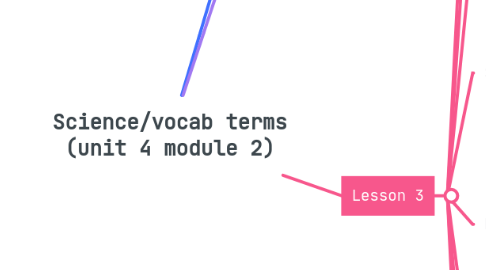
1. Lesson 1
1.1. Biosphere
1.1.1. The broadest most inclusive level of organization is the biosphere that includes all living organisms (plants, animals, bacteria) on the planet.
1.2. Biome
1.2.1. Regions on Earth with similar climates
1.3. Ecosystems
1.3.1. Ecosystems includes all the organisms (biotic) and non-living \ (abiotic) environment found in a particular place.
1.4. Communities
1.4.1. A community includes all the interacting living (biotic) organisms in an area.
1.5. Populations
1.5.1. A population includes all members of the same species that live in one place
1.6. Organism
1.6.1. The simplest level is a single organism / individual
1.7. Biotic
1.7.1. The living components of the environment are called biotic factors.
1.8. Abiotic
1.8.1. The nonliving factors are called abiotic factors and include physical and chemical characteristics of the environment.
1.9. Limiting Factor
1.9.1. This is what determines how many of a species can be in an area
1.10. Biotic Potential
1.10.1. Potential growth in perfect conditions with no limiting factors
1.11. Carrying Capacity
1.11.1. The largest number of individuals of one species that an ecosystem can support over time
1.12. Overpopulation
1.12.1. Populations size grows so large that it causes damage to the environment
1.13. Extinction
1.13.1. Species that has died out when no individuals are left
1.14. Endangered Species
1.14.1. Species whose population is at risk of extinction
1.15. Threatened species
1.15.1. A species that is at risk but not yet endangered
2. lesson 2
2.1. Symbiosis
2.1.1. A close, long-term relationship between two species that usually involves an exchange of food or energy
2.2. Commensalism
2.2.1. One species benefits and does not harm the other species. Examples are plants that grow on trees or trunks of other objects.
2.3. Parasitism
2.3.1. A symbolic relationship that benefits one species and harms the other. An example is a female wasp, laying eggs in a spider.
2.4. Mutualism
2.4.1. Relationship in which both organisms benefit. Example is clownfish and anemone, where the fish is protected and provides energy in return.
2.5. Cooperative Relationships
2.5.1. This is found within species and how they interact together. This includes elephants working together to raise young.
2.6. competitive Relationship
2.6.1. Organisms sharing the same habitat competing for the same resources. Could be as simple as trees competing for sunlight.
2.7. Predator-prey relationship
2.7.1. This is when one species will consume another.
3. Lesson 3
3.1. Ecological succession
3.1.1. The process of one ecological community gradually changing into another
3.2. Climax Community
3.2.1. A stable community that no longer goes through major ecological changes and the final stage of ecological succession in a land ecosystem
3.3. Primary succession
3.3.1. Ecological succession in new areas of land with little or no soil or vegetation, such as lava flow
3.4. Secondary succession
3.4.1. This is where an ecosystem that is already established has been destroyed and needs to restart. This can be from a forest fire for example.
3.5. Eutrophication
3.5.1. When the water becomes nutrient rich from fertilizer runoff. This can cause large algal blooms that can destroy the oxygen balance in the water.
3.6. Dynamic Equilibrium
3.6.1. This Is the balance between different parts of the ecosystem. Natural disruptions such as forest fires, floods, volcanoes, can change an ecosystem quickly.
3.7. Resource Extraction
3.7.1. Any activity that takes resources from nature
3.8. Pollution
3.8.1. When contaminents, also known as pollutants, are brought into an enviorment, they cause negative change
3.9. Nonnative species
3.9.1. When a species lives outside of it´ś natural range
